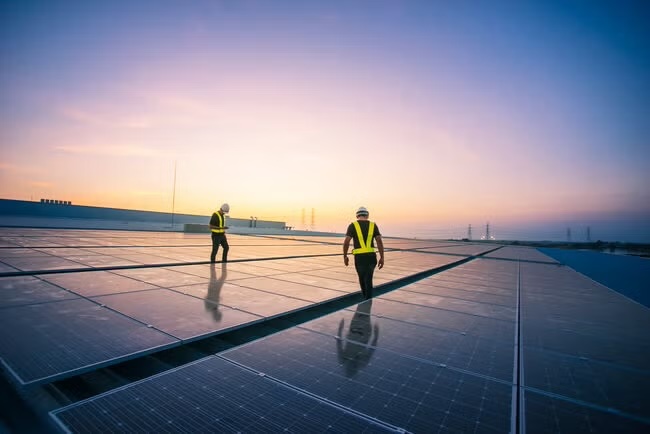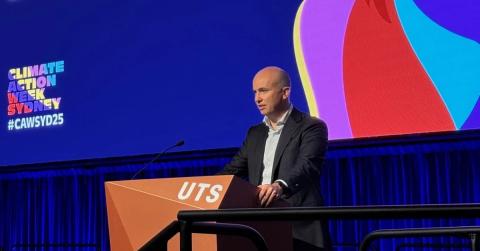Unveiling Australia's renewable energy transformation


As Australia faces the pressing challenges of climate change, escalating energy costs, and the need for a secure energy supply, the transition to renewable energy sources holds immense potential. Yet, the question arises: what endeavors must be undertaken to revolutionize Australia's prevailing energy framework, pivoting it towards renewable sources? In this post, we delve into the challenges involved in transitioning to a sustainable future and explore what it would take to transform the nation's existing energy system into one based on renewable sources.

A race towards renewable resilience
The urgency of adopting renewable energy in Australia is driven by a combination of environmental and economic factors. The country is already witnessing the effects of climate change, including rising temperatures and a growing frequency of extreme weather events. According to the Climate Council, Australia's average temperatures have been steadily rising, leading to more frequent and severe heatwaves, droughts, and bushfires. These extreme weather events not only pose significant risks to human lives and property but also disrupt essential services and infrastructure.
Reducing greenhouse gas emissions is crucial in mitigating climate change and its impacts. Australia, being one of the largest carbon emitters per capita, needs to transition to renewable energy sources to reduce its carbon footprint. Renewable technologies such as solar and wind have become increasingly cost-competitive with traditional fossil fuels. The falling costs of solar panels and wind turbines, combined with their scalability and abundance in Australia, make renewable energy a viable and attractive option. Transitioning to renewables not only helps address environmental concerns but also brings economic benefits.
The economic benefits of adopting renewable energy in Australia are significant. By transitioning to renewable sources, Australia can reduce its dependence on imported fossil fuels and achieve greater energy security. Moreover, renewable energy has the potential to lower energy costs in the long run. According to the Australian Renewable Energy Agency (ARENA), wind and solar power are already cheaper than new-build coal and gas plants in most parts of the country. This cost competitiveness, along with the potential for job creation in the renewable energy sector, presents a compelling case for accelerating the adoption of sustainable energy solutions.
Unleashing nature's goldmine
Australia is endowed with abundant renewable energy resources that hold immense potential for clean energy generation. The country is blessed with abundant sunlight, making it one of the sunniest places on Earth. According to the Australian Renewable Energy Mapping Infrastructure (AREMI), Australia receives an average of around 58 million petajoules of solar radiation annually. This high solar radiation level offers significant opportunities for solar energy generation, with the potential for large-scale photovoltaic (PV) installations and concentrated solar power (CSP) projects.
In addition to solar energy, Australia possesses robust wind resources, particularly along its expansive coastline. The Wind Energy Resource Atlas, provided by the Australian Renewable Energy Agency (ARENA), indicates that large portions of Australia experience wind speeds suitable for wind power generation. The southern coastline, in particular, benefits from consistent and strong winds, making it an ideal location for onshore and offshore wind farms. These wind resources hold significant potential to contribute towards the country's renewable energy targets and reduce dependence on fossil fuels.
Furthermore, Australia has untapped potential for other renewable energy sources like hydroelectric power and bioenergy. The country's expansive land area and diverse landscapes provide opportunities for the development of large-scale hydroelectric projects, especially in regions with significant water resources. Additionally, Australia possesses significant agricultural and forestry sectors, which generate organic waste that can be utilised for bioenergy production. This potential for bioenergy not only provides a renewable energy source but also offers opportunities for waste management and circular economy practices.
Examples of renewable success stories
Australia has witnessed notable success stories in renewable energy, with projects that have made significant contributions to reducing greenhouse gas emissions while driving local economic growth. One prominent example is the Hornsdale Power Reserve in South Australia, which became the world's largest lithium-ion battery installation upon its completion in 2017. The battery, built by Tesla in collaboration with the South Australian government, has played a vital role in stabilising the state's electricity grid by storing excess renewable energy and providing rapid-response power during peak demand periods. This innovative initiative has not only enhanced energy reliability but has also demonstrated the feasibility and scalability of energy storage solutions.
Large-scale solar farms have also emerged as successful renewable energy projects in Australia. The Sunraysia Solar Farm in New South Wales, for instance, is one of the country's largest solar farms, with a capacity of 255 MW. It generates clean electricity to power around 50,000 homes and has made substantial contributions to reducing carbon emissions. Moreover, solar farms like this have provided significant economic benefits to local communities through job creation during the construction and ongoing operation phases. These projects have not only facilitated Australia's transition towards a low-carbon future but have also stimulated economic growth and employment prospects within the renewable energy sector.
Conquering challenges to propel progress
The energy transition towards renewable sources is not without its challenges, spanning technical, economic, and policy realms. One key technical challenge is the intermittent nature of renewable energy generation, which relies on weather conditions. To overcome this issue, energy storage technologies play a vital role. Battery storage systems, such as lithium-ion batteries, provide a means to store excess energy during periods of high generation and release it during times of low generation. Pumped hydro storage, which utilises gravitational potential energy, is another effective solution for large-scale energy storage. These technologies enable a more reliable and stable integration of renewable energy sources into the grid.
In addition to technical challenges, economic factors can hinder the energy transition. The initial costs of renewable energy infrastructure can be high, although they have been decreasing in recent years. To facilitate the transition, supportive government incentives and regulations are crucial. Policies that provide financial incentives, such as feed-in tariffs and renewable energy certificates, encourage investment in renewable energy projects. Moreover, market reforms that prioritise renewable energy, such as carbon pricing and emissions trading schemes, create a level playing field and stimulate competition in the energy sector. The role of government in setting clear renewable energy targets and implementing supportive policies is vital to overcoming economic barriers and accelerating the energy transition.
Forging alliances for sustainable innovation
Collaborative efforts and partnerships between academia, industry, and government are crucial in driving the adoption of sustainable energy and advancing renewable technologies. Research institutions play a vital role in conducting cutting-edge research and development, while industry brings practical expertise and resources for implementation. Government support, through policies, funding, and regulations, establishes an enabling environment for collaboration and facilitates the transition to sustainable energy. Together, these stakeholders form a unified front, driving sustainable innovation and propelling the transition towards a greener future.
One notable example of collaborative efforts is the Australian National University (ANU) and the Canberra Institute of Technology (CIT) partnership in developing energy storage solutions. These two institutions have come together to establish the Renewable Energy Test Lab, where they collaborate to advance battery technologies and enhance energy storage performance. This collaborative effort bridges the gap between research and industry, facilitating the development of more efficient and cost-effective energy storage solutions.
Another example is the partnership between the Australian Renewable Energy Agency (ARENA) and various industry stakeholders. ARENA provides funding and support for collaborative projects that aim to accelerate the deployment of renewable energy technologies. These projects involve collaborations between research institutions, industry players, and government bodies to develop innovative solutions for energy storage, grid integration, and renewable energy generation. Through such collaborations, knowledge and resources are pooled together, fostering innovation and driving the adoption of sustainable energy on a larger scale.
Towards a transformed future
Sustainable energy holds immense transformative potential for Australia in multiple dimensions. By embracing renewable energy sources, Australia can play a significant role in mitigating the impacts of climate change, reducing greenhouse gas emissions and contribute to global efforts in combating environmental degradation. This transition not only helps protect the environment and ecosystems but also safeguards the well-being and future of its citizens, including increased job opportunities in the renewable sector.
Furthermore, sustainable energy offers the opportunity to achieve energy security and independence. By diversifying the energy mix and reducing reliance on fossil fuels, Australia can enhance its resilience to external supply disruptions and price fluctuations. Additionally, renewable technologies are becoming increasingly cost-competitive, with the potential to reduce energy costs for consumers and businesses.
The transformative potential of sustainable energy is clear. By accelerating the adoption of renewable energy and fostering innovation, Australia can lead the way towards a cleaner, greener, and more sustainable future, setting an inspiring example for others to follow.

Be a leader of change
You can develop the skills and knowledge to drive change and innovation across global energy challenges and not only future-proof your career but also contribute to the planet's well-being.
Take the next step in shaping a sustainable future with the UTS Online Master of Sustainable Energy or Master of Sustainable Leadership. Get in touch with our Student Enrolment Advisors today on 1300 477 423, or visit our website for more information.





